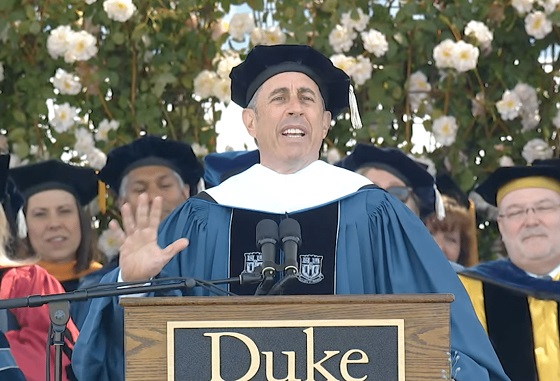Opinion
Exciting that Red Deer may take the lead in Solar Power discussions on March 6 2017
I am excited to hear that the city of Red Deer is considering a plan to retrofit homes to solar energy. To fully outfit a home with solar energy would cost 25,000 dollars and at 3% interest it would cost $242 per month for 10 years. The city would consider loaning the money, putting a lien on your home, and collect it back through property taxes, for example. The debt stays with the home. Your electric bills go down, your property value goes up.
The city puts in utilities sidewalks etc. that we all pay for through our property taxes. New builds would be less expensive and would be easier and the city should consider the option at all times.
Another benefit to the city as a whole would be eco-friendly, would create jobs and could take advantage of economy of scale. Taking the lead in this could push other levels of governments to participate. I am glad to see the city addressing this issue on March 6 2017. I would suggest everyone offer communication to our city. You could e-mail legislative [email protected]
Past blogs are included;
May I ask a stupid question or 2 or 3 or 11?
I hear a lot about solar panels, solar power, solar heating, and passive solar heating.
Solar panels produce electricity and could charge batteries for later use or to keep batteries charged. Electric cars and busses run on batteries that get recharged, after use, when they are plugged in. Why do we not see solar panels on electric cars and busses? You plug them in power supplies that are often times coal generated to charge up your batteries. Would the solar panels on the cars and busses lessen the time and power requirements? A bus can be 40 feet long and over 8 feet wide, offering a large roof area for solar panels.
We talk about solar panels being less efficient in the cold, under snow and ice. Why not incorporate solar heating panels to keep your solar panels warm, and ice and snow free?
Could we put a magnifying glass or lens in front of a solar panel to increase light intensity?
What about a mirror behind the solar panel?
How about a parabolic mirror?
What is that, you ask?
A parabolic mirror is a curved mirror, like a satellite dish.
According to Wikipedia;
“The parabolic reflector functions due to the geometric properties of the paraboloidal shape: any incoming ray that is parallel to the axis of the dish will be reflected to a central point, or “focus”. Because many types of energy can be reflected in this way, parabolic reflectors can be used to collect and concentrate energy entering the reflector at a particular angle.”
We have all seen satellite dishes being used for tv signals focused on receiver so why not use a polished reflective satellite dish to focus sunlight on a solar receiver, possibly a solar panel or a solar sphere? Like the TV dishes they started huge and got smaller and more efficient.
Could we not place a magnifying lens in front, and also incorporate passive solar heating for year round use? Could we not use a portion of the power created to ensure optimal aiming?
Solar panels are getting more powerful, more efficient and less expensive. Instead of spending billions on big projects could we not focus on smaller ones?
These may be stupid questions, but I just had to ask.
Is it time to have or implement a National Electrical Strategy?
I live in Red Deer, a small city in Central Alberta. My electrical bill last month was $95.
The average household, according to Google, in Canada uses 972 KWHs monthly, but I used 848 KWHs last month, so if I had been an average user then my bill would have been $109.
My electrical bill shows that my electrical use cost only $32.40 while administration cost $6.99, distribution cost $25.90 transmission fees cost $23.86, include access fees, rate riders and balancing pool allocations and GST and my bill came to $95.
Talk of carbon taxes, green energy would increase my energy costs. Fine, increasing my energy costs by 10% would mean an increase of only $3.24 because all the other charges should not go up. Changing fuel or supply should not affect administrators, power lines, poles or switches.
I started requesting electric bills from homes in other parts of Alberta and the costs varied from 3.75/ kwh to 5.99/kwh and the other costs varied in name and amount for varying total costs per kwh from 11.7 to 15.75/kwh. So at 848 kwh my bill would go from $95 up to $133.56 depending on location.
Alberta is deregulated and you have options of providers. Floating and fixed rates, but the other fees are always added.
A home in Vancouver showed an average 11.37/kwh so my bill would be $96.50, very similar to my Alberta bill. Vancouver is vastly different and denser market. Vancouver has 5,249 people per km. or 2100 homes per square km.
Alberta has a population of 4,252,879 people in 640,081.87 sq. kms. For a density of 6.7 people per square km. or 2.7 homes per square km. So you would think that the costs would be astronomically higher to compensate for the vast distances, and the increased wiring, poles, and installation of such, but apparently not.
So I thought about Ontario. Population of 13,982.984 in 908,607 square kms of land. 15.4 people or 6.2 homes per square kms. More than twice the density of Alberta. The transmission and distribution costs should be equal to or less than sparsely populated Alberta. I started requesting power bills from home owners in Ontario, especially in rural Ontario.
The first bill came from Winchester, 40 kms. from Ottawa. It showed a monthly usage of 661.24 KWHs. Energy costs varied from 8.7/kwh of low peak to 18/kwh during high peak for energy cost of $79.06. Add in delivery charge of $65.41, regulatory fees and HST and the bill comes to $164.96. Or 25/kwh. My current bill would now be $211.55 if I lived in Winchester.
The second bill came from a family outside Chesterville. It showed higher usage, perhaps because of location, age of appliances or lifestyle. Energy use of 1281 KWHs for a bill of $278.93 or 22/kwh. My bill would then be $184.65 if I lived outside Chesterville.
Albertans get their power from natural gas (44%), coal (39%) and even hydro (6%) while Ontario get their power from Nuclear, (66%) and Hydro (22%) But in Alberta, we are expecting increases in our power bills due to carbon taxes, green initiatives and the new power lines being built to the southern border. Paid for by current users to provide power south of the border. Ontario has some similar changes and challenges ahead to incur expectations of increased costs. Is this proper?
Alberta is only 70% the size of Ontario, our population is only 30% of Ontario, yet Alberta power bills are substantially lower. Capitalists will tell you that larger markets like Ontario, means lower costs, as one would also expect with increased density as in this case, Ontario.
Alberta deregulated the electrical sector increasing competition. Would that help or exasperate the problem in Ontario? Should the vast majority of urban homes subsidize the rural users? Should a standard rate be applied to all in Ontario?
To recap with averages of 972 KWHs per home per month it would cost $110.61 in Vancouver B.C., $108.90 in Red Deer Ab., $242.48 in Winchester Ont. And $211.65 in Chesterville Ont. Definitely not a level playing field, is it?
Is it time for the Federal Government to create a National Electrical Strategy? We could at least study on it.
What do you think?
Great Reset
Canadian MP warns new WHO pandemic treaty may enshrine COVID-era freedom restrictions

MP Colin Carrie
From LifeSiteNews
Colin Carrie recounted the freedom-throttling measures the Canadian government took during the COVID outbreak, warning that the WHO’s Pandemic Agreement may help make such measures permanent.
Canadian Member of Parliament (MP) Colin Carrie warned this week that proposed World Health Organization (WHO) agreements with a passing deadline of late May could “institutionalize” freedom-throttling COVID “pandemic mistakes.”
Carrie recounted the liberty-crushing COVID-era events that took place in Canada as well as around the world during the first-ever Sovereignty Summit held at the U.S. Capitol on Thursday, an event protesting the WHO’s pending threat to the sovereignty of its member nations, attended virtually by political leaders from around the world.
“Since COVID-19’s lockdowns and mandates, Canadians have seen our sovereignty, our charter rights and our civil liberties tested,” said Carrie, going on to point out that Canadian Prime Minister Justin Trudeau has admitted that he admires the “basic dictatorship” of China.
It was under such a leader as Trudeau that “freedom of speech, freedom of movement, freedom of consent and freedom of medical treatment were all enthusiastically challenged” by the government through “COVID dictates centrally controlled and communicated by the WHO,” Carrie noted.
Trudeau, moreover, “intentionally created an identifiable minority group — anti-vaxxers — and gleefully used all the power of the Canadian government to marginalize, dehumanize and keep over 6 million Canadians from fully participating in Canadian society,” Carrie declared.
He recalled how the Emergencies Act was “used to freeze bank accounts” while “businesses were shattered, seniors and loved ones died alone,” “children’s education was compromised and churches were closed,” affirming that Canadians do not want to relive this scenario during another real or supposed health emergency according to the dictates of the WHO.
Carrie went on to question why the WHO is saying the new Pandemic Agreement is “non-binding” when, according to the MP, the term “non-binding” was removed from the definitions of the treaty.
“Why would any country sign on to a new treaty when we haven’t conducted a serious evaluation of the last pandemic policy response? Will this treaty institutionalize WHO’s COVID pandemic mistakes?”
In a March 20 press release, the WHO called for an “urgent agreement from international negotiators on a Pandemic Accord … to bolster the world’s collective preparedness and response to future pandemics.”
“Only a strong global pact on pandemics can protect future generations from a repeat of the COVID-19 crisis,” a collective of heads of state wrote in a joint open letter to leaders of WHO member states.
A growing number of public figures as well as U.S. states and elected officials have raised the alarm about the so-called Pandemic Agreement in recent months.
In a letter dated May 22, almost half the U.S. governors, all of them Republicans, signed a letter to President Joe Biden declaring that they will resist any efforts of the WHO to control public policy in America through its proposed “Pandemic Agreement” and amended International Health Regulations (IHRs).
Earlier this month, Sen. Ron Johnson of Wisconsin also rallied every Republican in the U.S. Senate to sign an open letter imploring the Biden administration to reject the pending agreements being considered at the World Health Assembly (WHA) in late May.
Media
Trudeau’s Online News Act has crushed hundreds of local Canadian news outlets: study

From LifeSiteNews
Trudeau’s Online News Act, framed as a way to support local media, has hurt small media outlets while giving massive payouts to legacy media, a study has found.
According to a new study, Prime Minister Justin Trudeau’s Online News Act has successfully crushed local media outlets while mainstream media has remained relatively unaffected.
According to an April study from the Media Ecosystem Observatory, Trudeau’s Online News Act, also known as Bill C-18, has caused a 84 percent drop in engagement for local Canadian outlets, as Big Tech company Meta – the parent company of Facebook and Instagram – has refused to publish links to Canadian news outlets on their platforms.
“We lost 70 per cent of our audience when that happened,” Iain Burns, the managing editor of Now Media Group, which manages news posts for outlets serving smaller communities, revealed. He further explained that he experienced a 50 percent loss in revenue following the move.
“We’re not the only ones. Many, many outlets are in this situation,” Burns added.
The Online News Act, passed by the Senate in June 2023, mandates that Big Tech companies pay to publish Canadian content on their platforms. While the legislation promised to support local media, it has seemingly accomplished the opposite.
While Meta has blocked all news on its platforms, devastating small publishers, Google agreed to pay Canadian legacy media outlets $100 million to publish their content online.
The study, a collaboration between the University of Toronto and McGill University, examined the 987 Facebook pages of Canadian news outlets, 183 personal pages of politicians, commentators and advocacy groups, and 589 political and local community groups.
“The ban undoubtedly had a major impact on Canadian news,” the study found.
The study found a 84 percent drop in engagement for Canadian outlets, with small local news outlets being the most affected compared to larger government-funded outlets.
“Local news outlets have been particularly affected by the ban: while large, national news outlets were less reliant on Facebook for visibility and able to recoup some of their Facebook engagement regardless, hundreds of local news outlets have left the platform entirely, effectively gutting the visibility of local news content,” it explained.
However, LifeSiteNews has been relatively unaffected by the ban as viewership on its official Facebook page has remained relatively the same, similar to its Instagram account since most views already came from the United States.
Similarly unaffected was Meta: “We find little evidence that Facebook usage has been impacted by the ban.”
“After the ban took effect, the collapse of Canadian news content production and engagement on Facebook did not appear to substantially affect users themselves,” the study said.
While local media outlets’ viewership has declined thanks to Trudeau’s new legislation, larger media outlets have thrived due to increased payouts from the Trudeau government.
Legacy media journalists are projected to have roughly half of their salaries paid by the Liberal government after the $100 million Google agreement and the subsidies outlined in the Fall Economic Statement.
Mainstream Canadian media had already received massive federal payouts, but they have nearly doubled after Trudeau announced increased subsidies for legacy media outlets ahead of the 2025 election. The subsidies are expected to cost taxpayers $129 million over the next five years.
However, just as government payouts increase, Canadians’ trust in mainstream media has decreased. Recent polling found that only one-third of Canadians consider mainstream media trustworthy and balanced.
Similarly, a recent study by Canada’s Public Health Agency revealed that less than a third of Canadians displayed “high trust” in the federal government, with “large media organizations” as well as celebrities getting even lower scores.
-
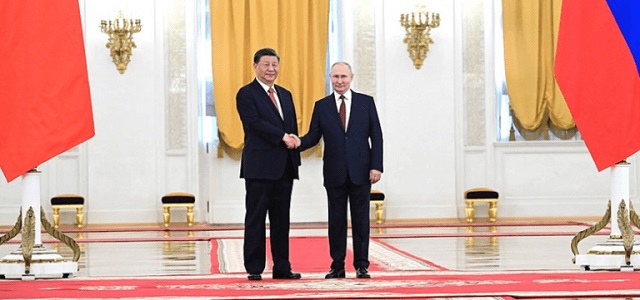
 Agriculture2 days ago
Agriculture2 days agoThe China – Russia “Grain Entente” – what is at stake for Canada and its allies?
-
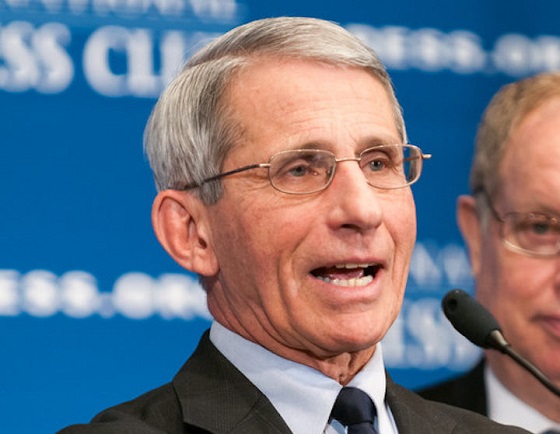
 COVID-192 days ago
COVID-192 days agoFauci’s Top Advisor May Have Illegally Evaded Records Requests, Experts Say
-
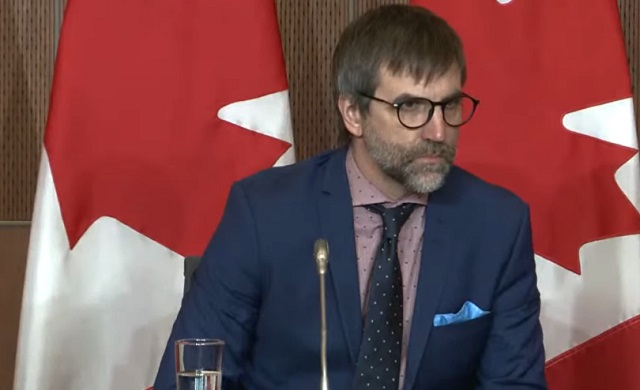
 Business2 days ago
Business2 days agoTrudeau’s environment department admits carbon tax has only reduced emissions by 1%
-

 Bruce Dowbiggin2 days ago
Bruce Dowbiggin2 days agoThe Most Dangerous Man In Canada: Emmanuel Goldstein Reborn
-
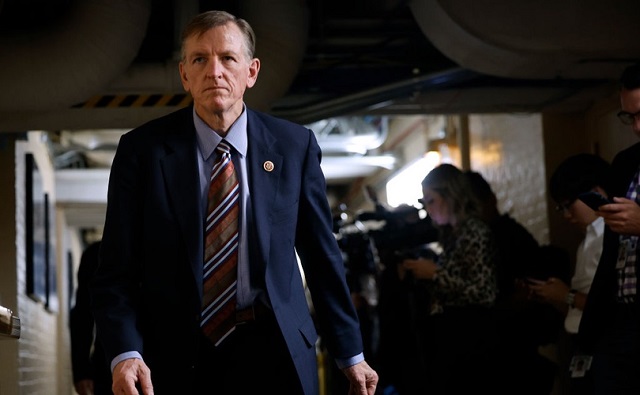
 International2 days ago
International2 days agoRep. Paul Gosar grills Biden official on government funding of underage ‘gender transitions’
-
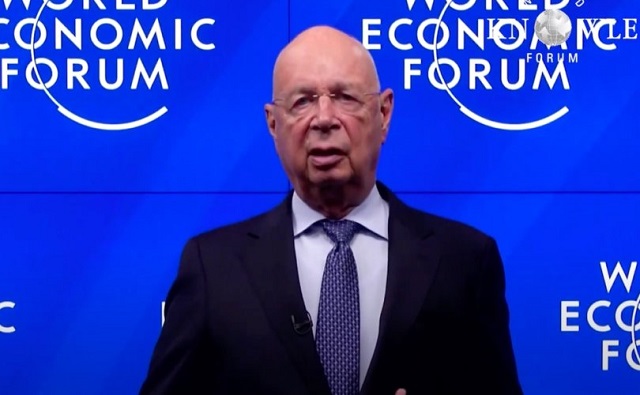
 Great Reset2 days ago
Great Reset2 days agoDr. Robert Malone reacts to Klaus Schwab’s resignation: ‘Resistance is not futile’
-

 Business2 days ago
Business2 days agoGovernment red tape strangling Canada’s economy
-

 Health1 day ago
Health1 day agoUniversity of Toronto Study Finds Teen Marijuana Use Tied To Dramatic Increased Risk Of Psychosis







